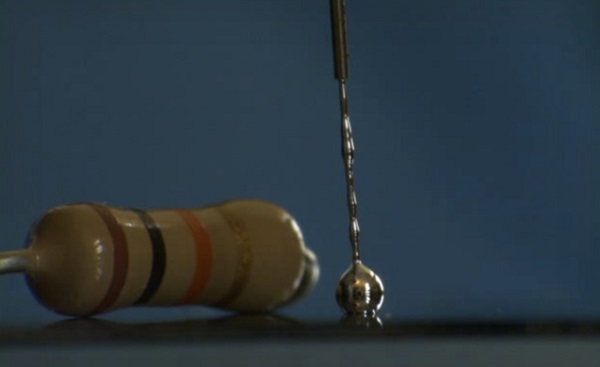Plastic has been the material of choice for 3D printing for quite some time now, but things are about to change. The need for flexibility determined researchers to turn their attention to liquid metals.
Not long ago, Shapeways introduced Elasto Plastic, a more flexible material for 3D printing, but for some scientists this still wasn’t enough. In their vision, the shape of the 3D printed objects should be easy to change, and the used materials should enable people to do that at will.

The researchers at North Carolina State University decided to work with gallium and indium, as these two metals have two very important properties. First of all, they’re non-toxic, which means that they could even be used in toys. Secondly, they are liquid at room temperature, fact that makes the resulting 3D printed objects very malleable. While 3D printing using metals isn’t actually something new, making flexible objects with such a method is in fact a premiere.
Dickey Group, a research group from NCSU’s Chemical and Biomolecular Engineering Department, even believes that wires surrounded by liquid metals could be produced. This would indeed be revolutionary, as such things would pave the road for flexible screens. Samsung and LG are already working on their own versions of flexible screens, but the liquid metal approach would gradually lead to the expansion of such displays. Imagine a world where the smartwatch, the smartphone and even the TV set can be bended at will.
Lead researcher Michael Dickey even suggests that the liquid metals could be combined with other materials “like rubber to make structures that you can stretch and deform.” Dickey also admits that this method has a major downside, as printing in liquid metal is a hundred times more expensive than in plastic. This difference would be later seen in the price of the 3D printed object, assuming that anyone using this method would be interested in selling the resulting products.
The possibilities of 3D printing in liquid metal are endless, and applications including anything from toys to industrial use. Should this method of printing take off, one might think that the price of the materials would eventually drop. However, the two liquid metals used by the researchers are currently very expensive and the chances of getting them at a lower price anytime soon is pretty low. In this context, I hope that the researchers will be able to find a material with similar properties that doesn’t cost that much, so that everybody can have access to such technologies.
If you liked this post, please check the Clothing Printer and the Legobot 3D printer made from LEGO bricks.










